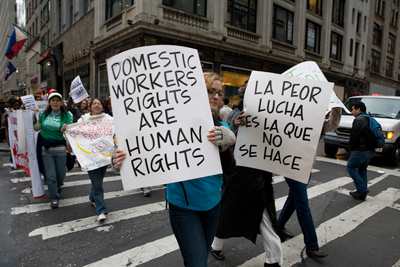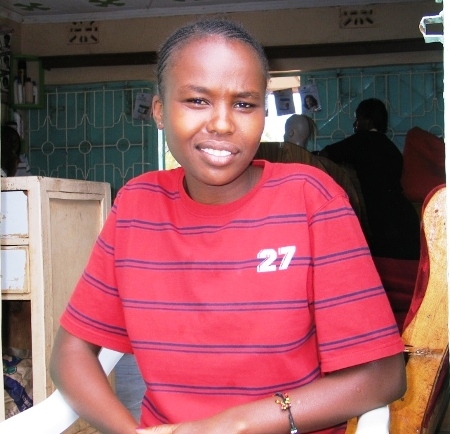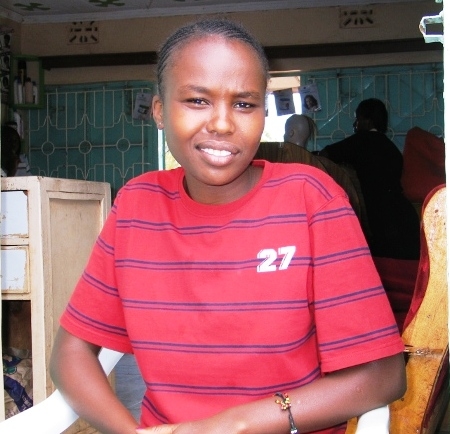
Half the Sky: Turning Oppression into Opportunity for Women by Nicholas Kristof and Sheryl WuDunn has received uncritical reception in the U.S. Reviewers have praised it for exposing gendered violence—or “gendercide” as Kristof and Wudunn call it —women continue to face in third world countries. The book tells heinous yet compelling stories of violence against women and girls ranging from sexual slavery, trafficking for prostitution, dowry murders, rape, and acid attacks, to name a few. Each ends on a hopeful note: a microloan, education, or Kristof himself helps each woman. These reviews celebrate Half the Sky for exposing gendered violence and women’s struggles in places that are often discounted in everyday reporting. They also celebrate these stories because they are at once ordinary and spectacular.
This celebration raises feminist concerns about how first-world writers represent “3rd-world women.” Specifically, the book’s popularity raises questions about the sorts of stories that speak to and move U.S. audiences who live in a country that is politically and economically a superpower that positions its citizens to do humanitarian outreach.
What are the political ramifications of Half the Sky’s representation of women needing to be saved by first-world men and women? What are the consequences of its uncritical reception? How can feminism offer a more complex analysis and political response to gendered violence?
Half the Sky’s reception has been so positive in North America because the book’s narrative framework relies on affective commonplace human-interest narratives. These narratives are written, circulated and read as what Rajeswari Sunder Rajan calls an unfolding serial: from mis-en-scene to disclosure of (gendered, racialized), oppression to progress through intervention (through a government grant or by Kristoff himself) to dénouement where individual woman move into a better future as an entrepreneur or as an economically independent woman. Invoking sympathy and compassion, the stories draw attention to gendered violence that individual women face. Once these stories are told, they quickly fade from view.
For us, Kristof and WuDunn’s book feels unsatisfactory and incomplete. After we read Half the Sky, we asked, now what?
This dissatisfaction has to do with its purpose: limited investment in the name of sympathy and compassion. A focus on individual women who manage to pull themselves up by their bootstraps suggests that poverty and lack of economic opportunity are local, domestic issues that can be addressed by changing cultural norms, external aid, and individual agency. But women don’t just live in families or small communities. Women live in nations and regions. Larger national and global decisions and events affect individual women and groups of women. For example, the economic and social restructuring of entire regions by IMF structural adjustment policies and events, such as war, contribute to women’s poverty and constrain their autonomy. Histories of ethnic strife that have roots in colonialism contribute to regional instability and to gendered violence.
Kristof and WuDunn never discuss the structural and historical relationship between women, poverty, national “development,” global economic policies, and regional policies. Nor do they address layers, or scales, of power in their discussion. For them, irresponsible, violent men and entrenched ideas about gender are the only obstacles to women’s economic success and empowerment.
Kristof and WuDunn’s stories resonate with several common “western” stories about how women are saved. Like the feminizing histories of the human interest story, with its roots in the 19th century novel, these stories were developed for a bourgeois class that sent white women out of the factories and into the interiors of the home. They also resonate with embedded colonial narratives where capitalism = the modern, and where westernization always trumps tradition. In this narrative, we (western women) save third world women from terrible fates, as capital saves the traditional backward third world from itself by contributing money, expertise, and commerce. In this narrative, money changes everything, empowering women so they feel better about themselves and are able to rise above the authority of men.
But does capital really save us/them all?
While Half the Sky pays attention to the micro-politics of the everyday, it doesn’t attend to larger systems and structures which shape the lives of women and which women must (and do) negotiate. It misses the larger processes that shape women’s lives and experiences.
Nor is any attention paid to how women actively engage larger processes and structures. Because there is no attention to larger structures and decisions, or to women’s efforts to negotiate those structures and decisions, the stories in Half the Sky only take us to the point where we are affected, or made aware, of the violence women face. We don’t know how to formulate a response that would talk about the situation of women in order to create meaningful action that would address women as a group or a class.
Half the Sky’s stories do not ask readers to understand broader contexts such as history, economy, patriarchy, and nation-state development, which influence women’s lives. This form of story telling ultimately hides the material and structural causes of women’s oppressions that transnational feminists demand we critically examine.
So what should be done? How can feminists reframe Half the Sky? How can feminists create ways to tell individual stories of gendered violence and link these stories to structures of violence? Of the police? The state? Within families? Through structural adjustment? How can feminists write in support of individual women’s struggles while drawing attention to systemic gendered oppression and to structural gendered exploitation?
Those questions would lead to feminist writing emphasizing women’s activities in systems and structures. Naila Kabeer asks how women “as historically situated actors cope with, and seek to transform the conditions of their lives.” She asks feminists to pay attention to women’s lives and experiences in relation to multiple and interconnected scales of power.
It is important to look at how women live, struggle, negotiate, and work within political and economies structures and to ask how much voice women have in decisions that are made and how they negotiate systems where they have limited voice.
Rebecca Dingo, Rachel Riedner, and Jennifer Wingard
(Photo Credit: NYC Independent Media Center)

